This Keto Chicken Biryani tastes JUST like proper Indian takeout, and uses chopped konjac noodles to provide a pretty accurate mouthfeel!

Several months ago, we tried a new Indian restaurant locally.
I decided to go REALLY wild and not only order from a new place, but to try a dish I didn’t usually order.
I’m autistic, this is a big deal, LOL.
Anyway, that Biryani was the stuff dreams are made of, and absolutely would have ended up one of my “samefoods”, but I was suddenly thrown into an urgent need to go low carb, and here we are!
I did google to see if there were any good options out there, but was pretty disappointed.
First off, they were all based with cauliflower as a rice substitute.
To me, that will never be acceptable as a biryani substutute. It may have decent flavour, but the mouth feel is going to be completely off.
Little chunks of cauliflower are in no way convincing as a sub for long, thin grains of basmati rice, after all!
I’ll well versed in cooking Indian food, but without that texture... nothing was going to replace Biryani,
Keto Chicken Biryani
At first, I thought of using Konjac Rice.
I love konjac rice, it’s a super convincing substitute for actual rice... but is shaped more like short grain or sushi rice... not right for biryani.
(You know, I hope that this post makes sense for non-autistics. I have no idea if/how much you guys obsess over the “rightness” of mouthfeel, textures, etc)
I was actually making some Low Carb Vietnamese Noodle Salad when it hit me:
If I were to chop up the konjac noodles I was using, it would totally work for basmati “rice”.
YES! Genius!
So, I set about designing my Keto Chicken Biryani recipe that very day!
The interesting thing with using Konjac in this recipe is that I have to sort of reverse the idea of how the rice is done with traditional biryani.
In traditional biryani, you par cook the rice, and then it finishes cooking - and taking up moisture - when being steamed over the curry base.
Use of Konjac Noodles in this Recipe
How this recipe differs from the traditional technique, is that we’re not par cooking the rice so that it has some moisture before taking up the rest from the curry...
... we’re cooking it to dry it out a bit, so that it’s ABLE to take up some more moisture from the dish itself.
Whenever you’re dealing with konjac noodles, you need to start out by:
1 - Drain the liquid that came with the package.
2 - Rinse the noodles VERY well - usually for about 2 minutes. This gets rid of the fishy funk the noodles start out with. (I know, that sounds super appetizing, right?)
3 - Drain them again, pat dry with paper towel if you’d like.
From there, I like to dry-fry it (ie: no oil) in a nonstick pan for a few minutes, just to dry up all the surface moisture.
I find that gives the noodles the best texture and taste, whatever I’m doing.
For This Recipe...
For this recipe, I take it a step further: Rather than just dry up the surface / excess moisture, I cook it even longer, to dry out some of the absorbed moisture as well.
These are noodles that have been sitting in liquid since they’ve been manufactured, so they are completely saturated. They are unable to take up any further liquid from whatever they’re being cooked in.
... which is not really ideal, especially when it comes to something like Biryani. The whole point of the steaming step is for the rice (noodles, in this case) to take up the flavour of the curry!
Anyway, once I’ve got them dried out a bit, I let them cool and then chop them up into rice sized pieces.
Note: as photographed this time, I kind of mailed it in on the chopping - they should have been smaller. Still, it tasted and FELT right!
Another Note on Moisture
While traditional Biryani starts out with a saucy curry, it’s not meant to be a wet / saucy dish.
Once it’s done steaming, you should have a fairly dry “curry”, and rice that’s... just flavoured rice. Not soupy at all.
As the liquid is absorbed by the rice, it also dries out the curry a bit in the process. Thus, the liquid to rice proportion is very important when making traditional biryani.
When it comes to using konjac, that proportion can be kind of hit and miss - it depends on how much liquid you cook out of the noodles, which is always a guesstimate/matter of eyeballing it.
There’s a simple enough solution, though:
If your final keto chicken biryani ends up soupy - and you want this ACCURATE - you can turn it out into a dry nonstick pan, and pan-fry it until the excess liquid has dried up.
Honestly, the times this ends up a little soupy, I usually mail it in and just serve it as-is. It’s still fantastic, even if slightly wet. (As pictured!)
A Note on Brand
I generally make this with “Better Than Noodles” (Green Package), or “Better Than Pasta” (Blue Package).
As pictured in this blog entry, I used the blue package variety - the green is a slightly more narrow noodle.
Both work super well for this dish.
Generally speaking, you’ll want something in the neighbourhood of angel hair or spaghetti, rather than something more like a linguini or fettuccine.
... assuming you’re obsessing about mouthfeel in the same way I do, anyway!
How to Make Keto Chicken Biryani
As a heads up, this is an ingredient-intensive recipe. It’s also incredibly accurate to the real thing - it tastes like proper Indian takeout!
Don’t be intimidated, I promise it’s worth it!
Full recipe follows, here is the pictorial overview:
Marinate the Chicken
Trim chicken thighs, if needed. Slice into bite sliced pieces, place in a medium or large plastic zip baggie. Set aside.
In a small bowl, combine yogurt, lemon juice and all of the remaining ingredients from the “chicken” section of the ingredients.
Pour mixture into the zipper baggie, seal, and agitate to distribute the marinade all over the chicken.
Chill for at least 2, but ideally 8 hours.
Make the Curry
Chop your cilantro and mint, set aside.
Measure out your spices and set them aside.
Chop the onion and Serrano pepper.
In a medium-large heavy pot, sautee chopped onion and Serrano pepper in the olive oil and butter, until onion is tender but NOT caramelized.
Add bay leaf, cardamom pods, cloves, star anise, garam masala, cumin seeds, and crushed chilies, continue cooking until fragrant.
Add tomato paste, cook for another minute.
Add chicken - marinade and all - to the pan, cook until chicken is browned (cooked!) on all sides.
Add lemon juice and chicken broth, stir well to combine.
Simmer on medium heat for 10 minutes.
Assembly
As the chicken is simmering, prepare your “rice”. (You could do this earlier, if you want. Sometimes I’ll do it before I get started cooking)
Drain and rinse the konjac noodles VERY well - at least a minute of rinsing under cold water. Drain well transfer to a large nonstick pan.
Cook over medium heat until all visible liquid is dried up.
Once your noodles are quite dry, remove from heat, chop up to “basmati rice” length, and set aside.
Once the chicken is cooked all the way through, season curry with salt and pepper, to taste.
Turn heat down to low.
Sprinkle cilantro and mint over the curry, then top with the dried konjac noodles.
Place a well-fitting lid on the pot, allow to steam on low heat for 20 minutes.
Serve with lemon slices and raita.
Serving Note
Do not eat the whole spices!
More International Keto Recipes
Looking to add some international flavour to your menu? Try some of these low-carb versions of my favourites!
Keto Cabbage Rolls
Low Carb Chicken Korma
Keto Doro Wat
Keto Gyoza [Potstickers]
Keto Jamaican Beef Patties
Keto Manakish
Easy Keto Ramen Recipe
Keto Orange Chicken
Keto Pad Thai
Keto Perogies
Keto Sauerkraut Buns
Keto Sushi Rice
Low Carb Shanghai Noodles
Low Carb Vietnamese Noodle Salad
Paleo Stuffed Grape Leaves
Sugar Free Furikake Seasoning
Easy Keto Butter Chicken
... also, be sure to check out our International Keto Recipes for even more options!
Share the Love!
Before you chow down, be sure to take some pics of your handiwork! If you post it to Bluesky, be sure to tag us - @CelebrationGen. We're also on Pinterest, so you can save all your favourite recipes to a board!
Also, be sure to subscribe to my free email newsletter, so you never miss out on any of my nonsense.
Well, the published nonsense, anyway!
Keto Chicken Biryani
Ingredients
Chicken:
- 1 lb boneless skinless chicken thighs
- ⅓ cup Plain Greek yogurt
- 1 tablespoon Lemon juice
- 4 Garlic cloves pressed or minced
- 2 teaspoon Garam masala
- 2 teaspoon Ginger puree
- ¾ teaspoon Coriander powder
- ½ teaspoon Salt
- ½ teaspoon Cayenne
- ¼ teaspoon Ground Cumin
- ¼ teaspoon Turmeric
- Pinch Ground Nutmeg
Curry:
- 1 tablespoon Olive oil
- 1 tablespoon Butter
- 1 Small onion finely chopped
- ½ - 1 Serrano pepper finely chopped
- 1 Bay leaf
- 4 Cardamom pods
- 4 Whole cloves
- 1 Star anise
- 1 teaspoon Garam masala
- 1 teaspoon Turmeric
- ½ teaspoon Cumin seeds
- ¼ teaspoon Crushed chilies
- 2 teaspoon Tomato paste
- 1 teaspoon Lemon juice
- ⅓ cup Chicken broth
Assembly:
- 2 packs Konjac noodles
- ¼ cup Fresh cilantro chopped
- 2 tablespoon Fresh mint
Instructions
Chicken:
- Trim chicken thighs, if needed. Slice into bite sliced pieces, place in a medium or large plastic zip baggie. Set aside.
- In a small bowl, combine yogurt, lemon juice and all of the remaining ingredients from the “chicken” section of the ingredients.
- Pour mixture into the zipper baggie, seal, and agitate to distribute the marinade all over the chicken.
- Chill for at least 2, but ideally 8 hours.
Curry:
- a medium-large heavy pot, sautee chopped onion and Serrano pepper in the olive oil and butter, until onion is tender but NOT caramelized.
- Add bay leaf, cardamom pods, cloves, star anise, garam masala, cumin seeds, and crushed chilies, continue cooking until fragrant.
- Add tomato paste, cook for another minute.
- Add chicken - marinade and all - to the pan, cook until chicken is browned (cooked!) on all sides.
- Add lemon juice and chicken broth, stir well to combine.
- Simmer on medium heat for 10 minutes.
Assembly:
- As the chicken is simmering, prepare your “rice”
- Drain and rinse the konjac noodles VERY well - at least a minute of rinsing under cold water. Drain well.
- Chop noodles into “basmati rice” length pieces, then transfer to a large nonstick pan.
- Cook over medium heat until all visible liquid is dried up. Once your noodles are quite dry, remove from heat and set aside.
- Once chicken is cooked all the way though, season curry with salt and pepper, to taste.
- Turn heat down to low.
- Sprinkle cilantro and mint over the curry, then top with the dried konjac noodles.
- Place a well fitting lid on the pot, allow to steam on low heat for 20 minutes.
- Serve with lemon slices and raita.

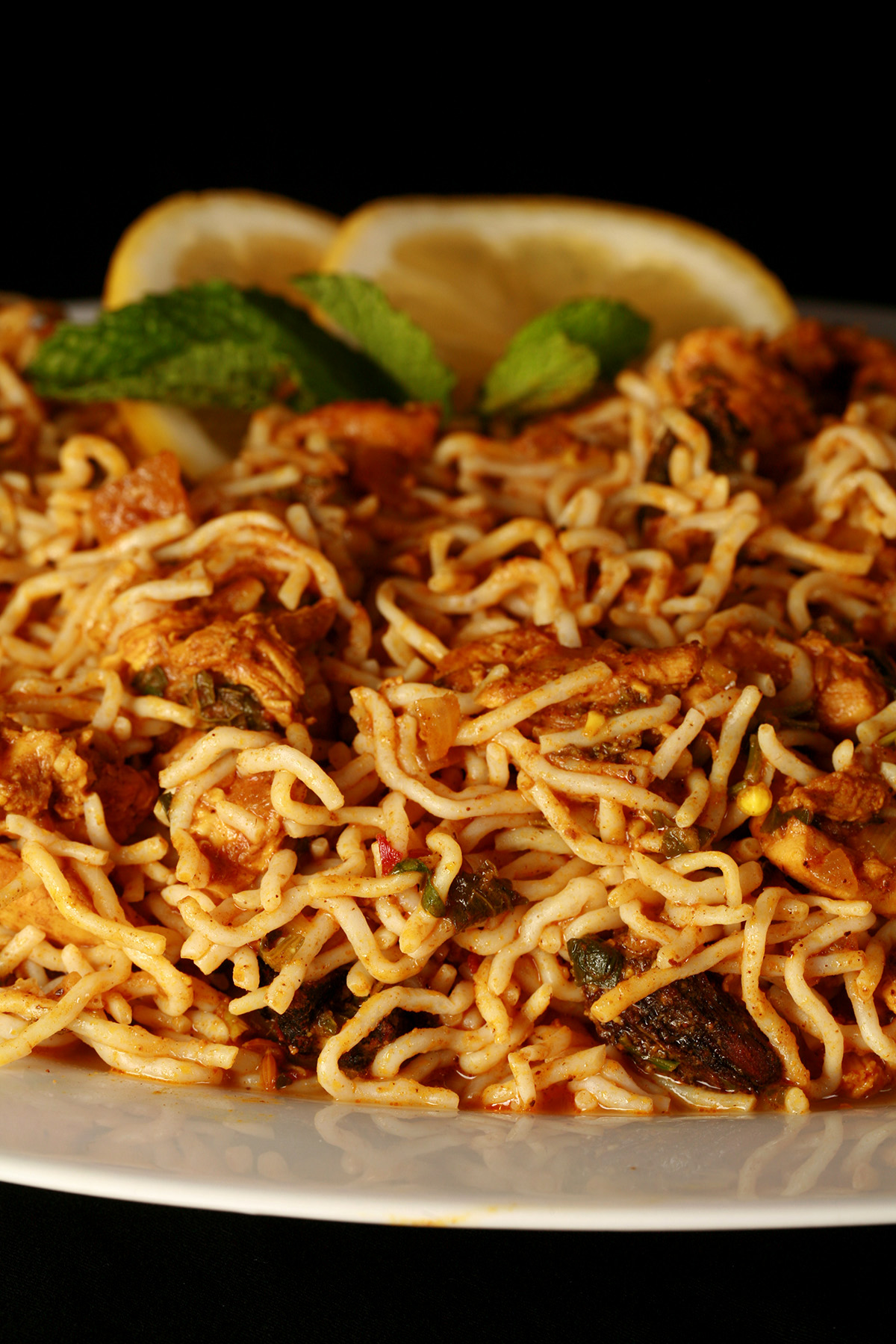

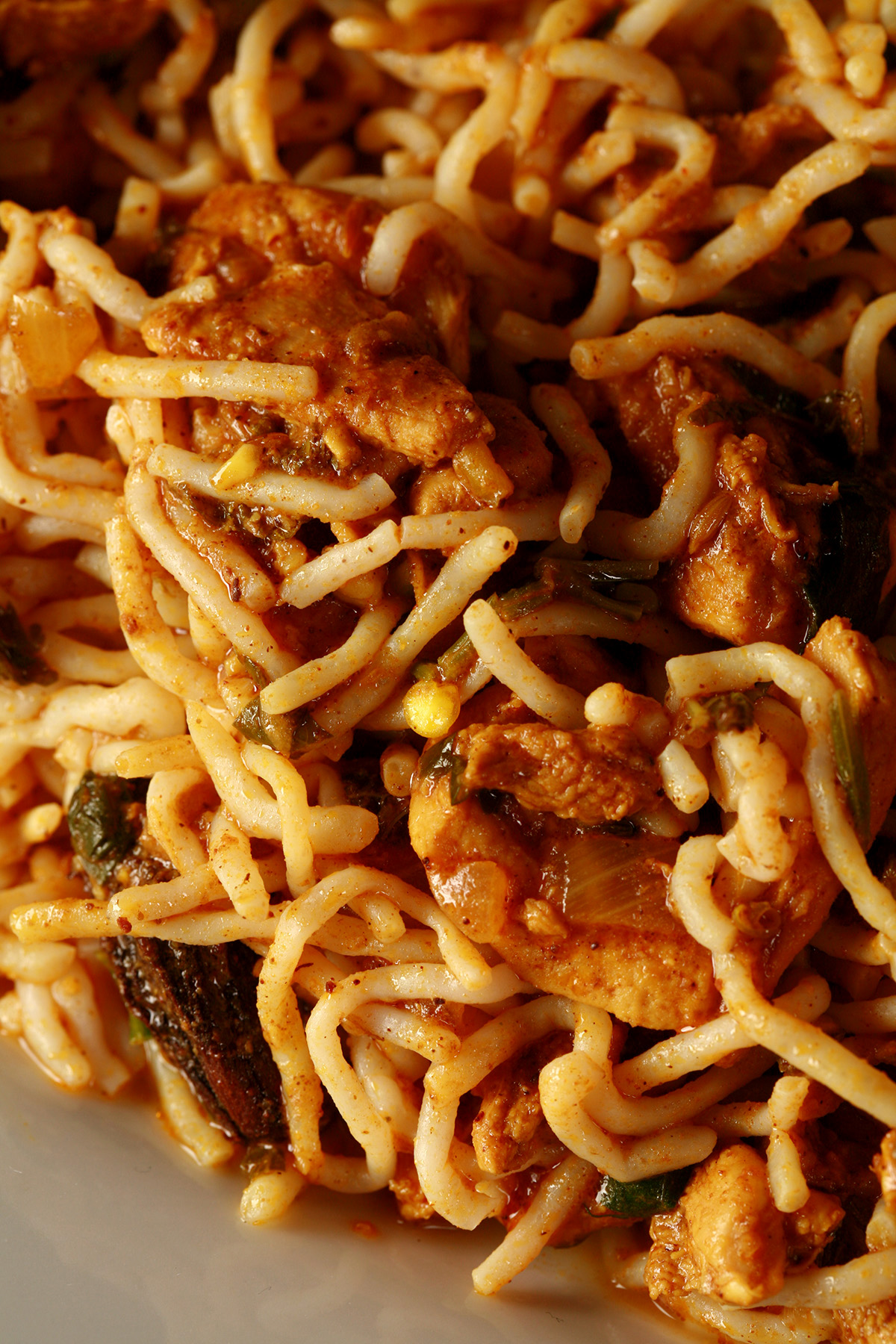


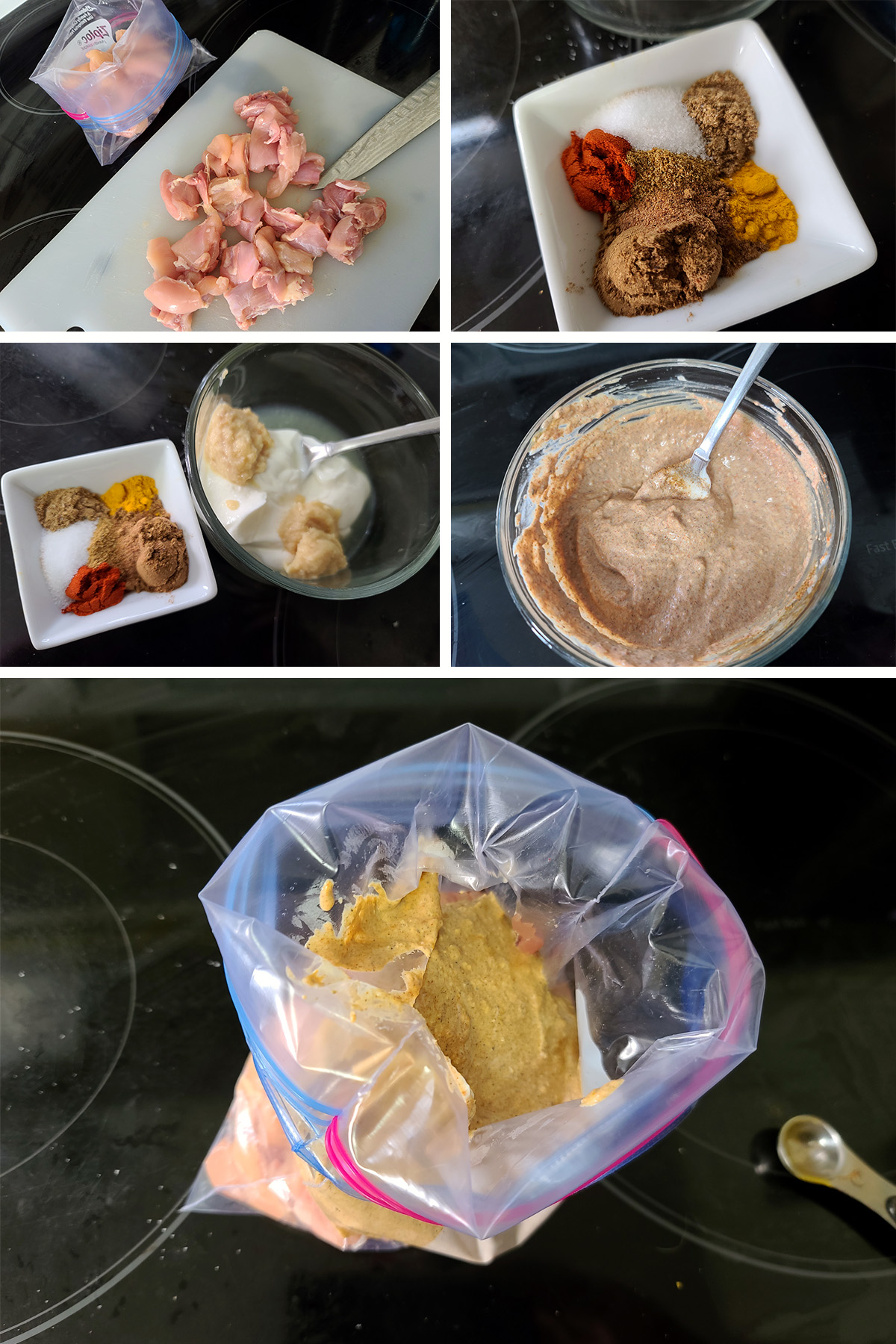



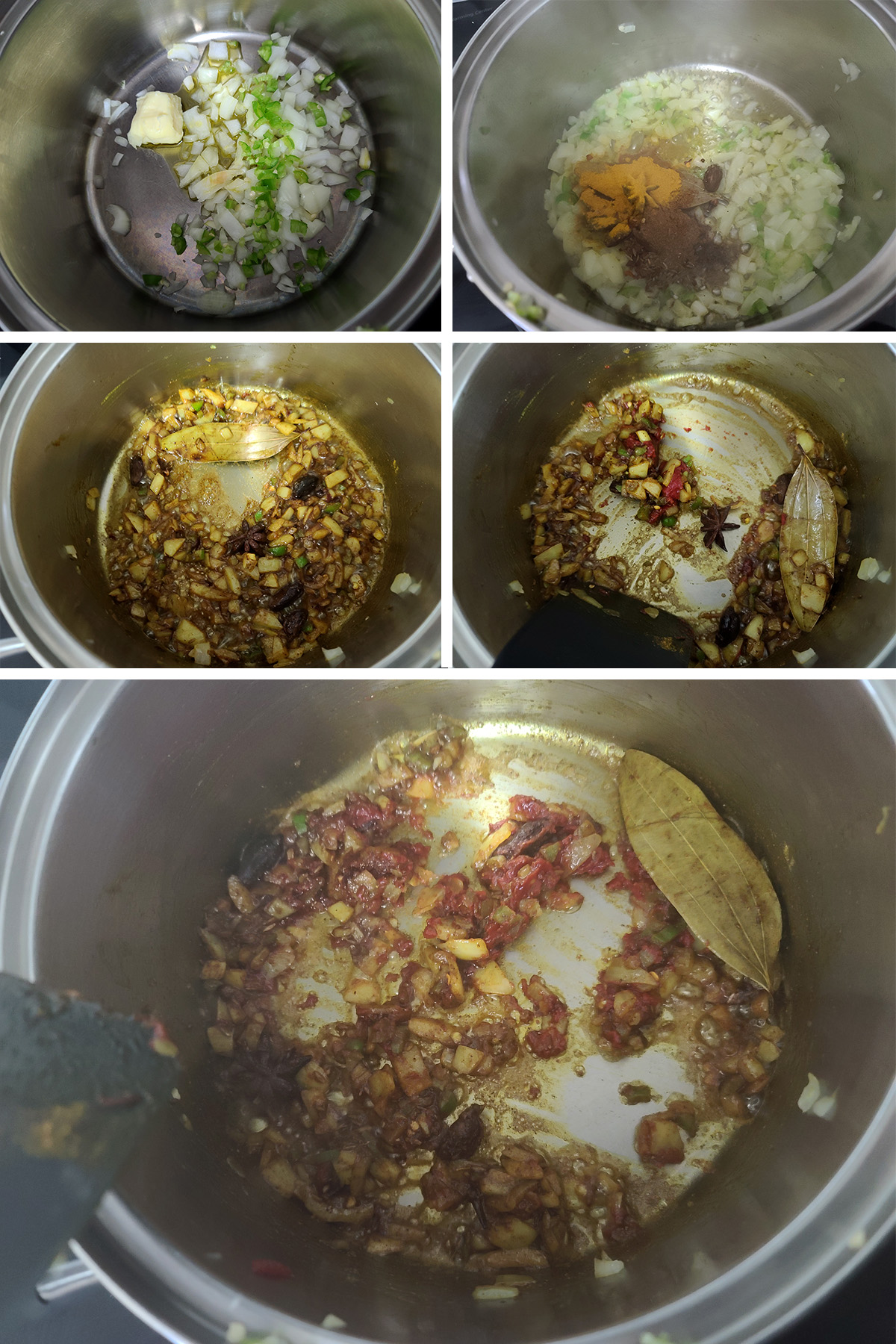
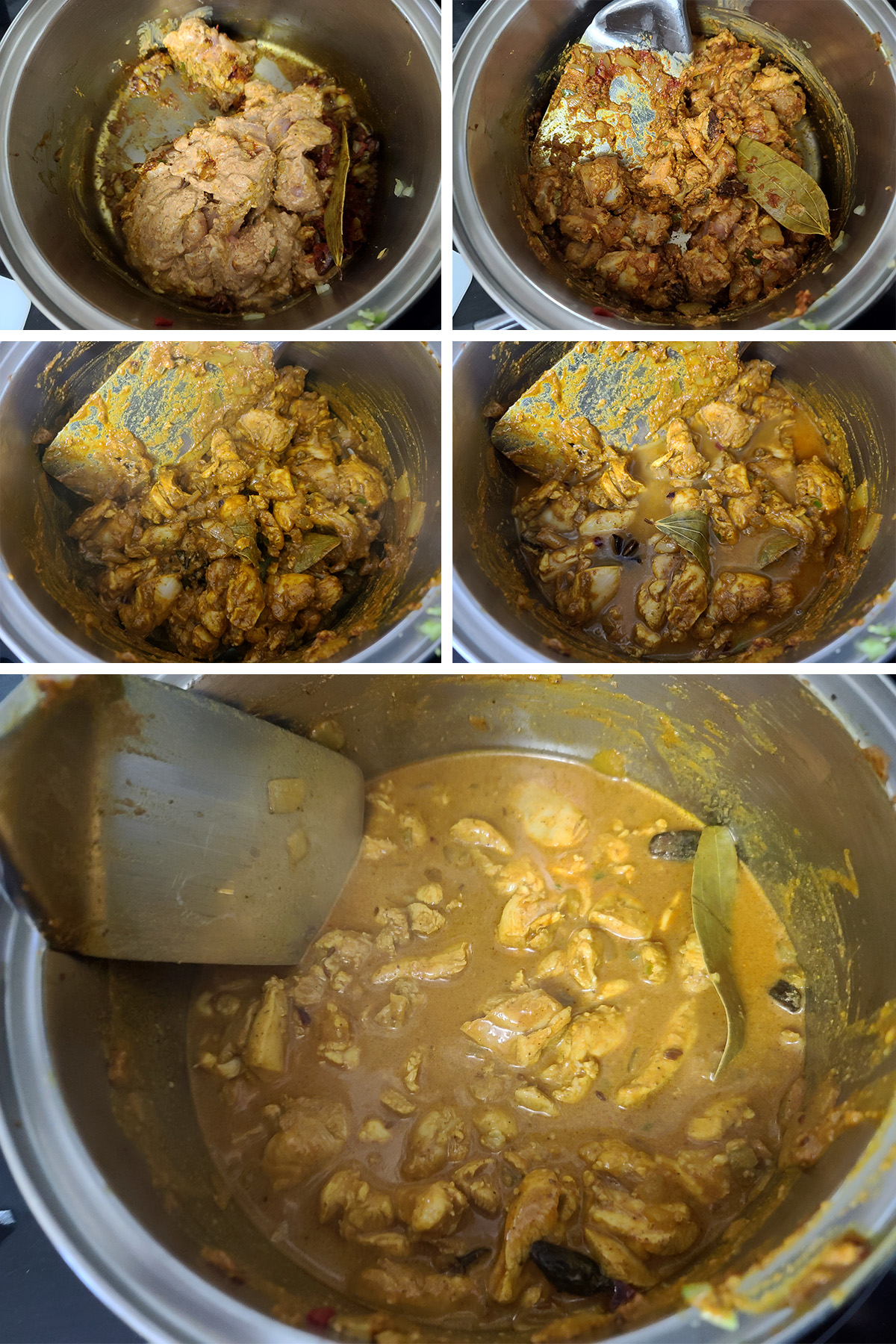


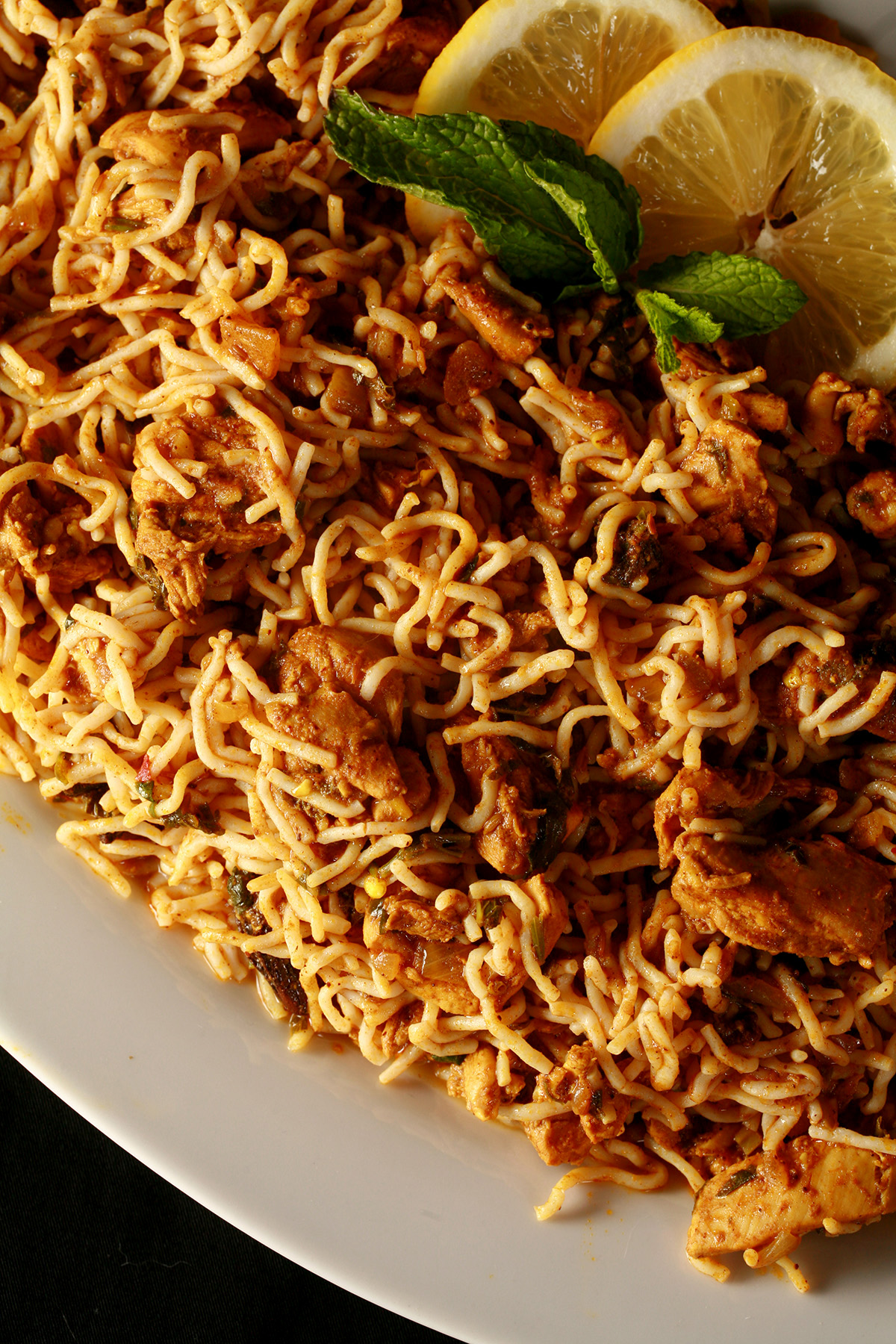






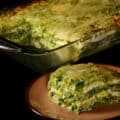


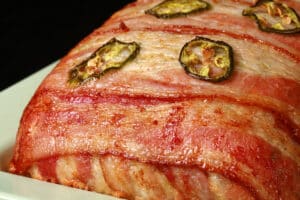

Leave a Reply